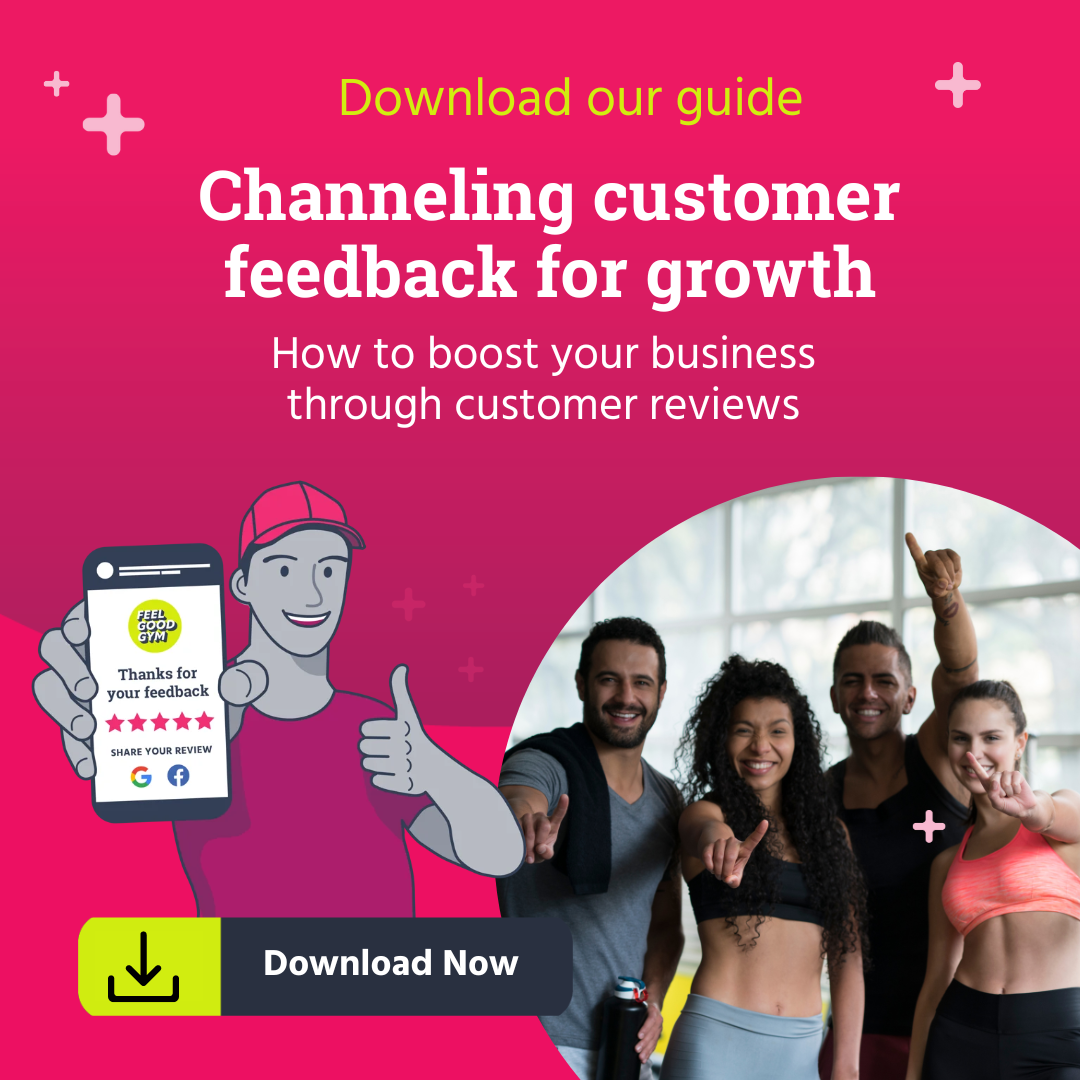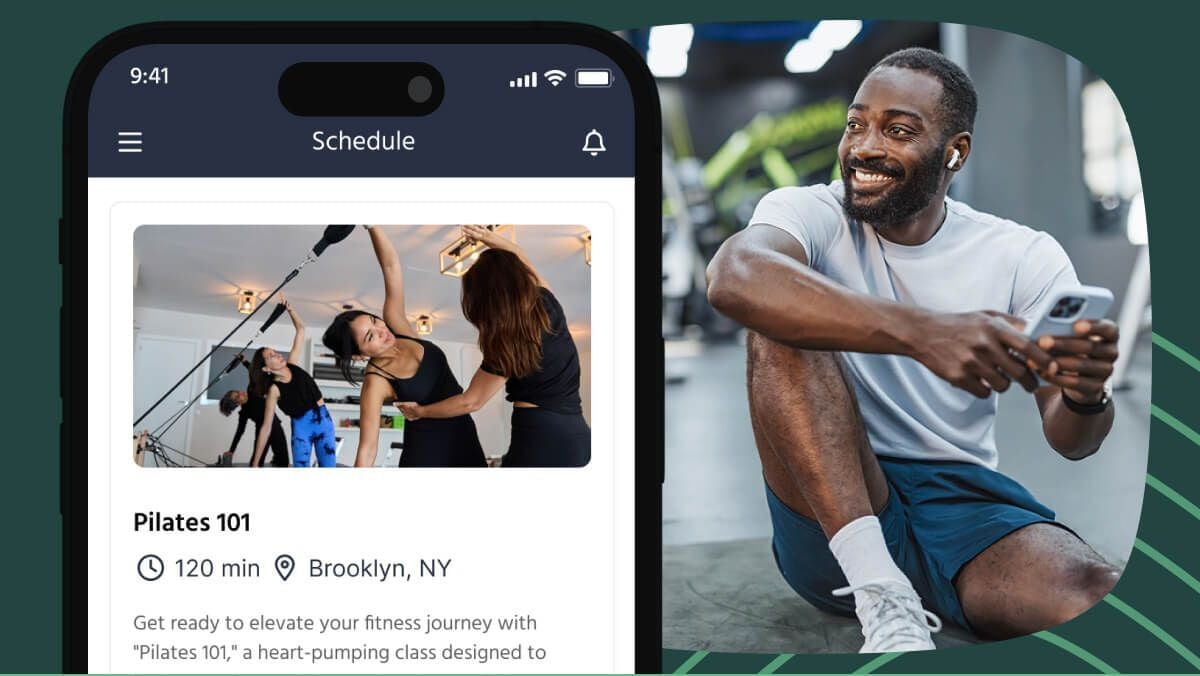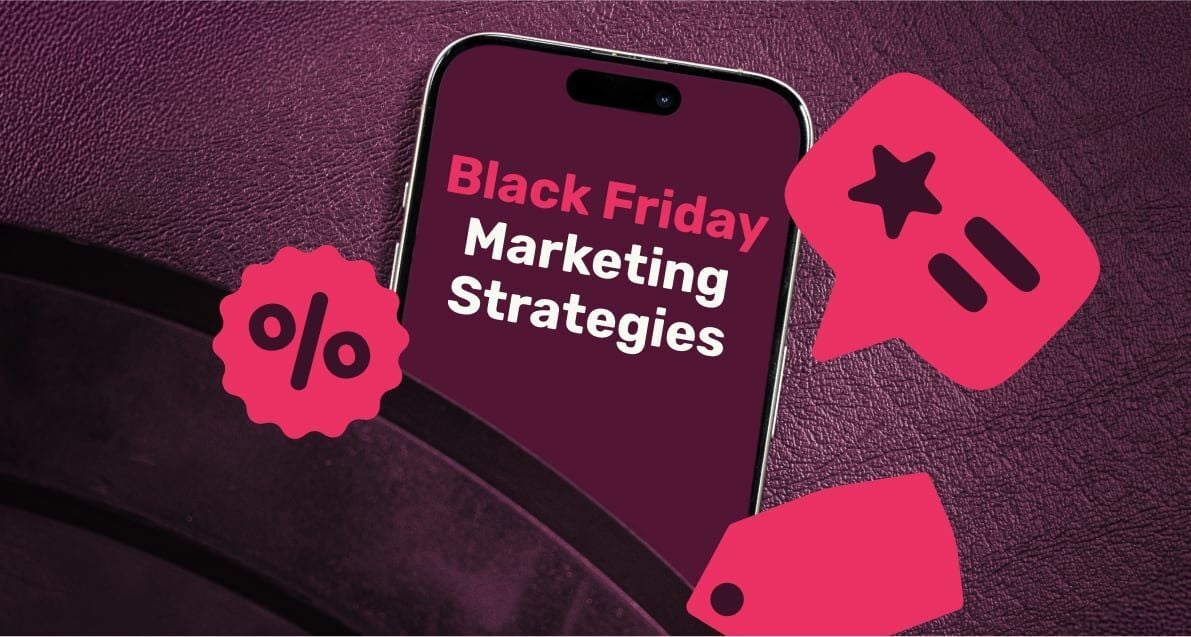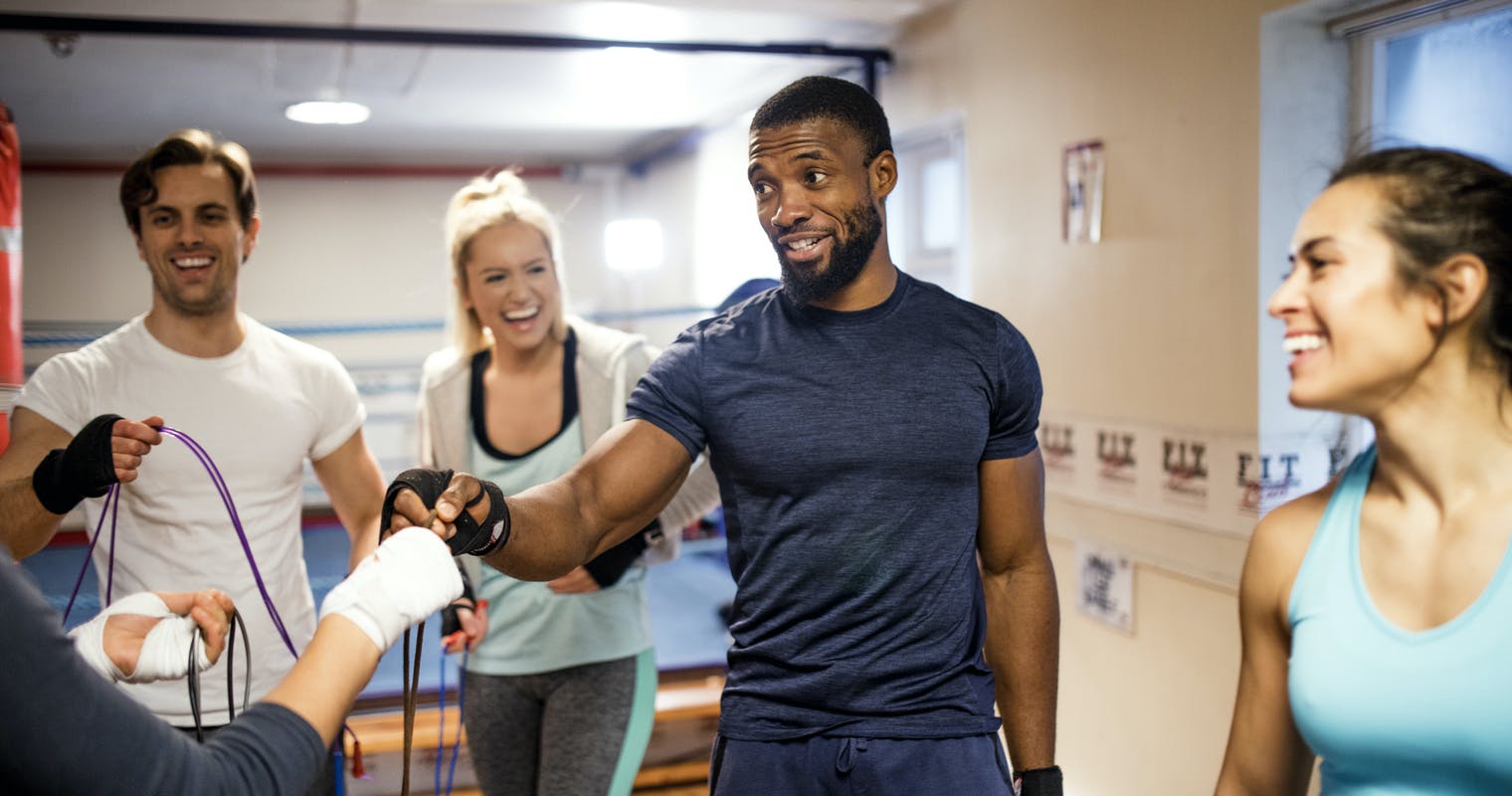Social media platforms are gradually becoming the new search engines. With 4.26 billion internet users using at least 7 different platforms to search new products and get the latest news, it’s tragic to see social media marketing for the yoga community not being used to its full potential.
A form of digital marketing, the primary goals for social media marketing revolve mainly around brand awareness, lead nurturing, and communication. However, lead generation and direct sales may also be facilitated through the careful implementation of marketing strategies.
In this article, we’ll discuss the importance of social media marketing, the different platforms, and provide a few tips on how yoga studios can get the most out of it.
Find the best ways to use customer reviews
to grow your business
DOWNLOAD NOW 
Why is social media marketing important for your yoga studio? 
Social media is essential for yoga studios in 2023. Thanks to the heavy reliance on photos and videos, you can promote your yoga studio brand in a highly appealing way through popular platforms such as Facebook, Instagram, and TikTok to name a few. Here are some reasons why.
Increased brand awareness
Nothing beats social media algorithms when it comes to reaching new audiences and expanding your marketing opportunities. With content relevancy and consistency in place and a few tricks up in your sleeve, a viable social platform can help you increase brand awareness without spending a single dime on ads.
Moreover, as your content is recommended only to the interested audience, you may also find strong leads from the platforms.
Real-time customer engagement
Emails are slow and calls can be annoying. But social media engagement is fast and appealing. As a yoga studio owner, you can receive customer inquiries, offer customer service, and solve customer issues through real-time communication, all the while keeping other communication channels open for your yoga business.
Let’s say a client has a question about the studio class schedule for next Sunday. They reach out to your Instagram account through DMs. Your social media manager takes their time to welcome and answer their queries. If they have other inquiries, the conversation continues or ends with a personalized goodbye message. The conversation can even be transferred to your yoga instructor for more details.
Variety of content options
Imagine creating a single piece of content and being able to repurpose it to solidify your whole online presence. Social platforms allow you to do exactly that. Whether you create a short video for TikTok or Instagram Reels, you can repurpose it to work with YouTube Shorts or Facebook videos.
On the other hand, longer YouTube explainer videos can be cut and repurposed in multiple short formats. That’s not all—if you have a blog post that isn’t suitable for social media, you can turn it into an infographic or even a podcast as a yoga teacher. The variety of content options makes social media marketing so effective for yoga studios.
Cost-effective marketing
Every social media platform offers free content creation and distribution. While ads may cost a few cents for each click, they are generally cheaper than search engine ads. However, the cost of ads varies a lot between social media platforms.
User-generated content is another aspect you may want to include in your social media marketing plan. From sharing client images and videos to asking for testimonials, every aspect of social media strategy is cost-effective and almost free.
Cheaper targeted advertising
Social media ads are slightly cheaper than search engine ads and a lot cheaper than TV, newspaper, and print ads. Being a yoga teacher, you can locally target your interested audience and go even farther using social media, without needing to invest three times as much money on traditional marketing.
While social media cost-per-click (CPC) and click-through-rate (CTR) depend on the industry and your budget, on average platforms like TikTok and Pinterest cost a few cents less than the CPC for Facebook or Instagram. However, the average CTR is deemed higher on Facebook and Instagram.
Detailed analytics and insights
The following analytics are available on social platforms to analyze your regular posts and ads:
- Impressions
- CTR
- CPC
- Conversions
- Cost per conversion
- Ad relevance score
- Video views
- Engagement rate
- And many others
While the extent of these analytics can vary between platforms, they’re quite comprehensive in almost all of them. Use these analytics and insights to refine your ad campaigns and target audience to further optimize cost and effectiveness.
Top 3 social media yoga studio platforms
Here are 3 popular social media platforms that we tried and tested and determined as the best option for your yoga studio. We’ll discuss content strategy, the best time to post, and the target audience. We’ll also name a few fitness influencers for inspiration.
1. Facebook
Content strategy:
- Video content: Both short and long video formats work well on Facebook.
- Live video: Live videos are quite popular on Facebook due to their ability to reach new audiences. Share your students practicing yoga and maintaining proper posture for better engagement.
- Images and infographics: Turn your blog posts into infographics and images with quotes to make them suitable for Facebook.
- Reviews and testimonials: Let your users leave comments on your service pages and posts to showcase their positive experiences to new clients.
Timing and frequency:
- Weekdays except for Wednesday between 10 am and 3 pm
- Wednesday at 11 am and 1 pm
- Weekends between 12 pm and 1 pm
- It’s good practice to post 3-5 times a week to maintain an active presence.
Target audience:
According to age group,
- 13-17 years old: 8%
- 18-24 years old: 25%
- 25-34 years old: 25%
- 35-44 years old: 16%
- 45-54 years old: 13%
- 55-64 years old: 8%
- 65+ years old: 5%
Popular influencers:
2. Instagram
Content strategy:
- Visual content: Make sure to use high-quality videos and images of your content for Instagram. Embrace a consistent editing style to create a cohesive look.
- Instagram Live: Share your live sessions with your social media followers and interact with them.
- Tips, tricks, and safety workshops: Upload videos and images of proper yoga practice and safety procedures along with workshop cut scenes to present your brand as an expert in this field.
- Quotes and inspiring videos: Inspiring videos with upbeat tones and visuals of yoga practice work well for the fitness industry.
Timing and frequency:
Although it depends on your business model and niche, the best time to upload content on Instagram is:
- Weekdays from 11 am to 2 pm and 7 pm to 9 pm
- Instagram user activity peaks on Wednesday around 11 am and Friday around 10 am
- Post at least one piece of content a day to keep your audience engaged.
Target audience:
- 13-17 years old: 25.2%
- 18-24 years old: 33.1%
- 25-34 years old: 22.5%
- 35-44 years old: 10.9%
- 45-54 years old: 4.6%
- 55-64 years old: 2.4%
- 65+ years old: 1.3%
Popular influencers:
3. TikTok
Content strategy:
- Short-form videos: Share workout routines, transformation videos, and healthy recipes.
- Q&A sessions: Answer your followers’ questions and encourage them to interact.
- Tips and tricks: Yoga tips and tricks to make poses more effective.
- Motivational videos: Use uplifting music and visuals to create motivational videos on TikTok.
Timing and frequency:
- Weekdays: from 12 pm to 2 pm and 6 pm to 9 pm
- Weekends: from 9 am to 11 am and 7 pm to 10 pm
- Upload at least once per day—preferably more—to keep content fresh and updated.
Target audience:
- 18-24 years old: 41%
- 25-34 years old: 27%
- 35-44 years old: 12%
- 45+ years old: 4%
Popular influencers:
Social media marketing tips and strategies for yoga teachers 
Hopefully, you’ve understood which platforms are most suitable for sharing your yoga content. Here are a few basic tips you need to follow to stay effective and relevant to your audience.
Define your goal
Social media marketing is a great tool for various purposes including brand awareness, lead generation, nurturing, and customer service. However, you must define your goals before you start your marketing journey.
Let’s say you create a generic social media post with a CTA asking users to sign up for a free personal yoga teacher class but fail to specify the customer segment and action you want them to take after the class. As a result, you could end up with lots of non-qualified leads and non-converting customers.
Create multiple social media accounts
Although social platforms discourage creating multiple accounts for a single brand, you may need multiple accounts to handle different segments of your business. For example, you could create separate profiles for different locations, reward programs, and customer service, with everything converging into a single main account.
You can also create different accounts for different yoga teachers and classes that you offer and create separate content for each. However, multiple account strategies are only recommended when you’ve expanded to a few locations and are growing.
Identify target audience
Creating social media content means identifying your target audience and understanding their requirements. Identify your target audience by analyzing the insights and metrics offered by your social media accounts.
Track the followers that interact with your content the most and understand their interests. Based on your followers’ interests, inquiries, and demographics, create content that resonates with them.
Create relevant content
Content relevancy is critical in social media. With hundreds of competitors out there looking to hook new customers, sharing irrelevant content can be a deadly mistake. Avoid repeating content or going off topic with content that isn't interesting to your audience.
Stay consistent
When it comes to social media, create a content calendar and stick to it. Most social media algorithms respect consistency and relevancy over quantity. You can post weekly, but make sure you stick to it and stay focused on relevancy.
Engage with your audience
We understand that it can get tough to engage with each comment and DM. However, try to acknowledge their existence and respect their feedback as yoga studio owners.
The bottom line
Social media marketing efforts are important for your yoga studio to create brand awareness, interact with customers, and as a source of cheaper marketing alternatives. The best social platforms for your yoga studio are Facebook, Instagram, and TikTok, with YouTube and Twitter following close behind.









